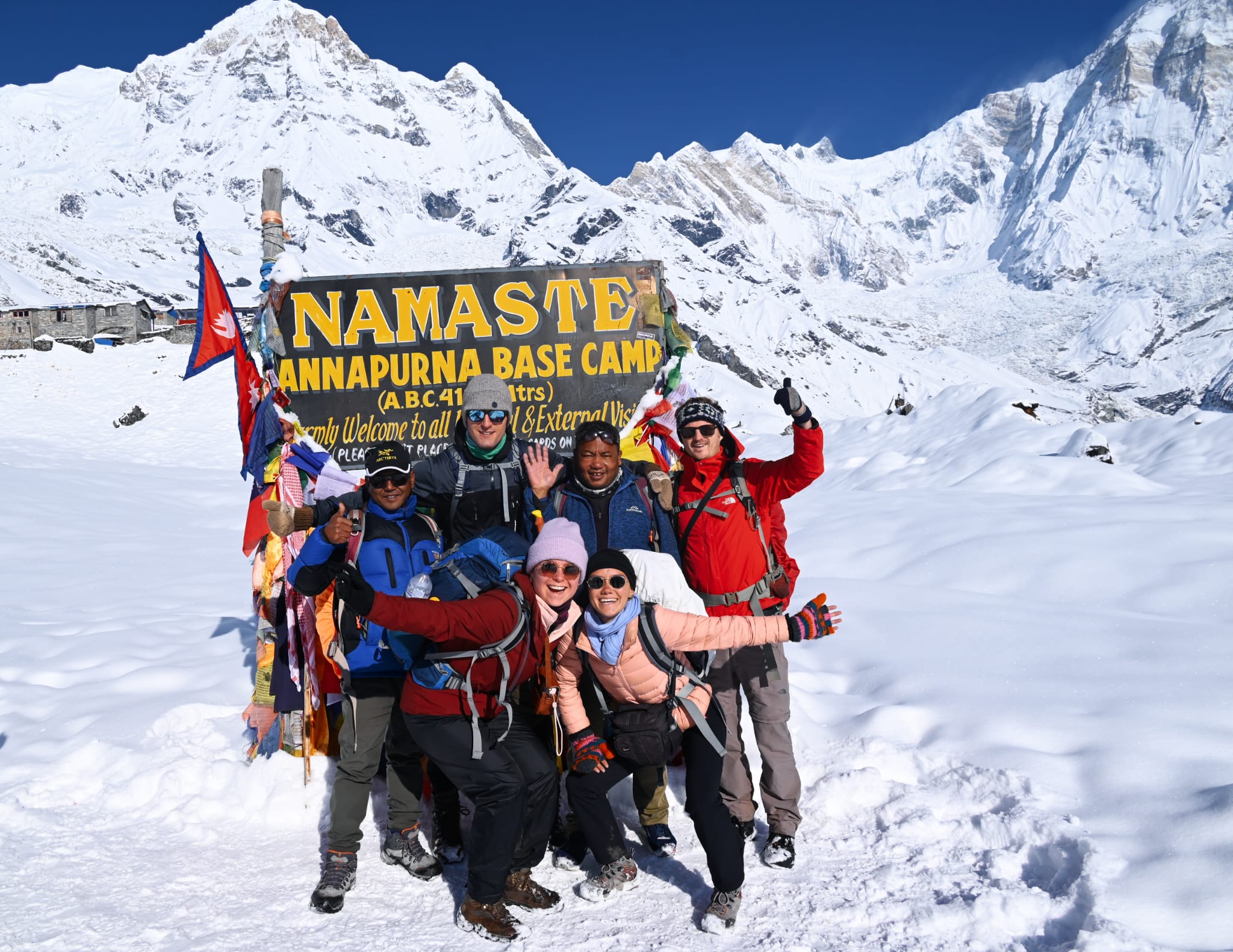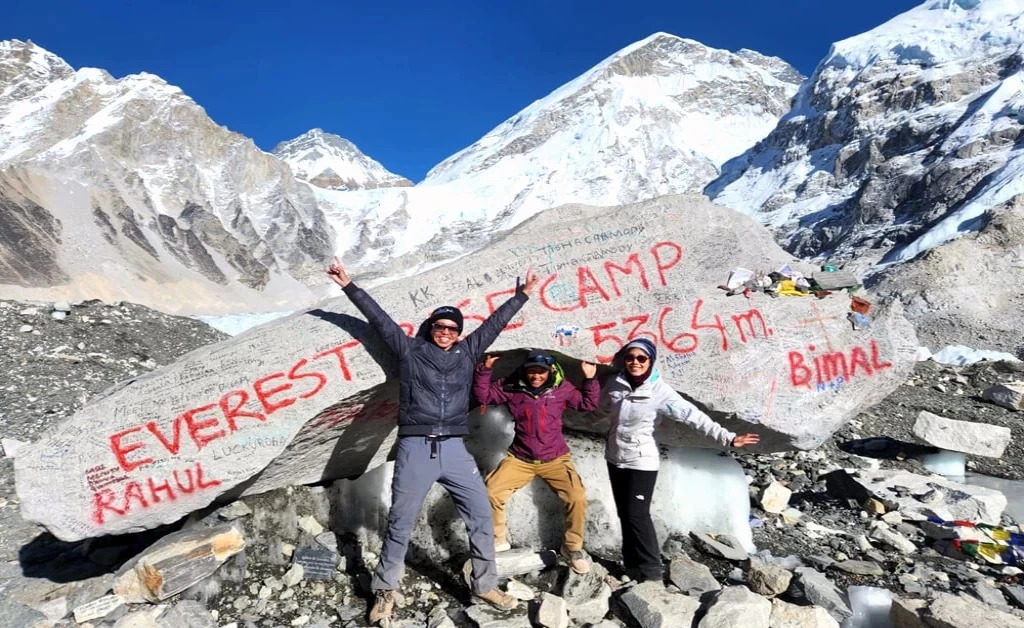Manaslu Circuit Trek - 14 Days
Quick Info
- Geography: Himalaya
- Location: Manaslu Region
- Level of Difficulty: Moderate- Challenging
- Duration of Trek: 12 Days trek, 14 Including Kathmandu
- Average Walking Duration: 5-6 hrs per day
- Max Altitude: Larkya La Pass (5,106m/16,924 ft.)
- Starting Point: Machha Khola
- Ending Point: Dharapani/Besisahar
- Ethic People: Gurung, Tamang, Magar, Chettri
- Accommodation: Tea house/ Lodges
- Transportation: Private or Shared Jeep
Trek Overview
The Manaslu Circuit Trek is a rugged trek that goes around the eighth-highest mountain in the world Mount Manaslu (8,163m/ 26,781ft) in the Manaslu region of Nepal.
The Manaslu range has some of the most remote hiking areas of the world and different adventurous hiking routes, and Himalayan expeditions. The circuit trek is also less crowded than the EBC Trek, as well off-the-beaten trekking. With some touches of Tibetan tradition, this Manaslu trekking journey leads you to remote local villages, the Base camp of Manaslu mountain (8,163m/26,781ft), magnificent mountains, breathtaking waterfalls and monasteries.
The Manaslu Circuit trek route is roughly 177 kilometer (110 miles) long with slightly, different amount depending on the path and any optional side trips you decide to take.
It is thought to be one of the best trekking adventures with some stupas, colourful prayer flags, and beautifully carved, miniature stone Chortens to provide a world of Buddhist culture and spirituality.
The entire circuit lies in the conservation zone of the Manaslu region which has so far kept nature, wildlife, habitat, and other human bursts is not so destroyed and hopefully will not be for a long while. The native tribes have learned to live in harmony with ecology and all of its aspects
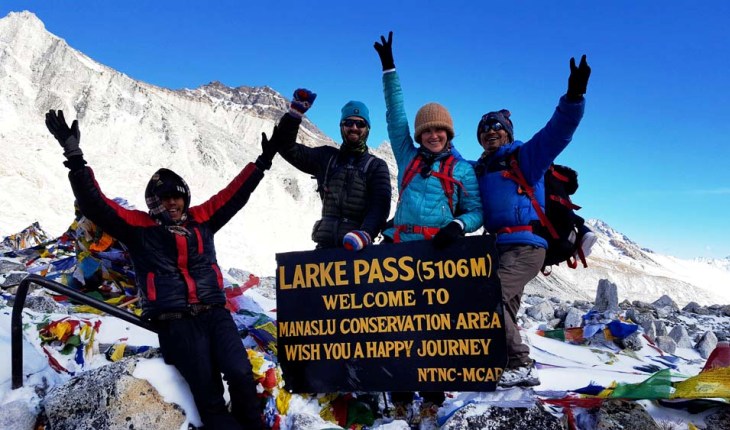
Why Choose Manaslu Circuit for Trekking?
- You will walk through wooded paths with lovely mountain views where you can see the area's biodiversity. If you take these footpaths during your Manaslu trek, your journey will have its natural scent and atmosphere.
- The limited area for cultural tourism, is between Jagat (1340 meters/4395 ft) and Dharapani (1,960 meters/ 6,430 ft) the Manaslu Region. Therefore, most of your journey in this designated area will be a sensorium of delight, being a decorative wilderness experience, and sensory natural bicycle riding.
- The Larkya La Pass is a high pass itself having a height of 5106 meters, which makes one satisfying trekking experience, that one wishes to awake after sleeping and repeat the new experience again.
- The Birendra Tal (3,691 meters/ 12,110 ft) is the lake in the Manaslu glacier that is accessible.
- After a day rest in Samagaon (3500 meters/ 11480 ft) you will trek to Manaslu Base Camp (4800 meters).
- You will have the experience of the Tibetan culture and lifestyle of people living in high altitude.
There are ample interesting stories and landscapes to experience in this circuit trek, trekking through the remote villages and the mountain high passes and stunning waterfalls of this trek you will have a marvelous taste of rural living in the high altitude. In these areas, they have maintained their rural civilization in its virginity and have not gone urbanized.
Ideal Season for Manaslu Circuit Trek
The ideal times for trekking Manaslu Circuit is early spring (March - May) and in the autumn (September - November). These times of the year provide the most stable temperatures and perfect conditions for trekking in the area.
Spring (March, April, May)
Spring is said to be the best time of the year for trekking all over the Manaslu Circuit. The weather conditions are relatively stable and the temperatures are mild (especially lower in altitude). The rhododendron forests beaming with colors in the spring time provide a unique twist to the landscape as they bloom during this time.
The daytime temperatures generally range from 10 to 20 degrees celsius making spring the perfect temperatures for trekking in the Manalsu Circuit.
Autumn (September, October, November)
Autumn is another great time for the Manaslu Circuit hike. The weather, temperatures are stable with clear skies. The trails are well trodden, and the vistas from the mountains are wonderful. The peaks usually provide crystal clear views.
The daytime temperatures generally range from 10 to 18 degrees celcius, which allows for comfortable trekking weather. There are also many major festivals during this time in Nepal as well to add another
cultural dimension to your trek.
Temperatures during the season (Spring, Autumn)
- Daytime temperatures: 10°C to 15°C (50°F to 59°F) at lower altitudes, and it can get warmer as you descend.
- Nighttime temperatures: 0°C to -5°C (32°F to 23°F) at lower altitudes, and it can get even colder at higher elevations.
What to expect during Spring and Autumn? - Mild temperatures during the day (although it can be quite chilly at higher altitudes).
- Clear skies and good visibility of the surrounding peaks and landscapes.
- Good pictures and videos
- Lesser chance of rainfall or snowfall, reducing the risk of landslides and avalanches.
- Well-established teahouse accommodations along the trail, make it more convenient for trekkers.
Permits Required for Trekking
Trekkers must obtain several permits for the Manaslu Circuit Trek to get entry at the entry point of the trail (Jagat). The most critical is the Restricted Area Permit (RAP), which controls trekker numbers in the sensitive border region.
During the peak season (September to November), the RAP costs USD 100 per week and USD 75 per week during the off-peak season. You can secure it through a trekking agency or the Nepal Tourism Board in Kathmandu.
Additionally, the Manaslu Conservation Area Permit (MCAP), costing approximately NPR 3,000 for foreign trekkers, is essential for conservation efforts and covers the entire Manaslu Circuit Trek and the Tsum Valley. The Annapurna Conservation Area Permit (ACAP) is also required as the trek briefly overlaps with the Annapurna Circuit. It costs around NPR 3,000 and is valid for both regions.
Trekkers' Information Management System (TIMS) card TIMS card costs about USD 20. These permits ensure a legal and well-supported trek, preserving both the natural environment and cultural heritage of the region. It's advisable to obtain them in advance to save time and streamline your journey.
Tsum Nubri Rural Municipality Fee (Local Permit) is a recently introduced (2024) trekking permit in the Tsum-Nubri region of Manaslu and costs Rs1000 per person. This permit can be acquired directly on the trek and is compulsory for the Manaslu Circuit Trek and other treks in the region.
How challenging is the Manaslu Circuit Trek?
The Manaslu Circuit represents a challenging trek, situated in Nepal. It has a total distance of nearly 177 km, which means that every day you will need to walk multiple hours for several days, usually on uneven surfaces. There are many suspension bridges, and waterfalls to cross as well, which can be a bit daunting at times. For an experienced walker there will be no problems completing this trek, however, for some people it may become difficult to finish this trek.
The first couple of 3 days walking may be a bit of a struggle, but, afterward, with proper acclimatization, you will become accustomed to walking. The 9th, 10th and 11th day will be more challenging than your other trek days because you will be doing high altitude trekking, however, the more difficult it becomes the more rewarding the landscapes will become, and you will be glad you did.
Since this is a high-altitude trek where the highest part of the walk is over 5167 meters (Larkya La Pass), you can experience difficulties with your breath and walking. Trek difficulty varies from person to person and depends on various other factors as well, such as the weather, time of year, your level of physical fitness, and having proper trekking gear etc.
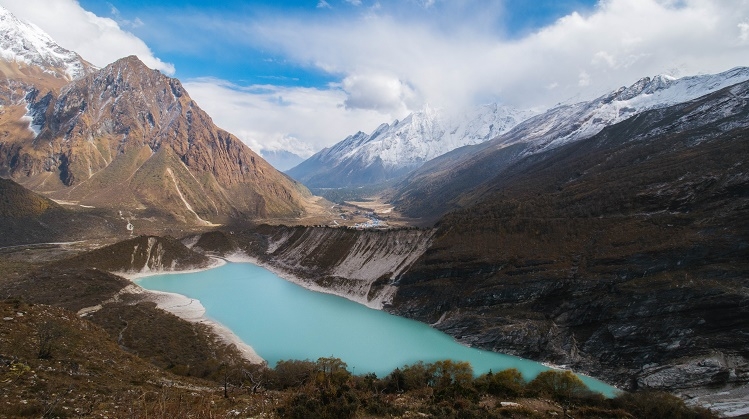
Trek Highlights
- Reach the Manaslu Base Camp (4,8015 m)
- An energetic journey to some of the wild and unexplored zones of the Nepalese Himalayan range.
- Witness the beauty of Mt. Manaslu (8,163 meters), the world's eighth-highest mountain.
- Explore the highlands with the Manaslu Circuit Trekking Package and socialize with the locals to learn more about the Himalayan way of living.
- Explore the historic Nubri Monastery, Tserang Monastery, and Pungyen Gompa along the trek.
- Larkya La Pass, one of the most challenging and rewarding passes at an elevation of 5,160m/16,751ft.
- Breathtaking panoramic views of prominent peaks like Himalchuli (7,893 m/ 25,896 ft), Ganesh Himal (7,422 m/ 24,350 ft), and Annapurna II (7937 meters / 26040 ft).
- Experience a perfect blend of two of the best trekking regions in Nepal ie. Manaslu and Annapurna
- Enjoy the serenity of the wetlands in the Manaslu region.
- Visit the enchanting monasteries and accompany the monks for prayers.
- Tranquil waterfalls and stream views along the trekking route.
- Taste the variety of flavors of Tibet and Nepal.
- A local and knowledgeable trekking guide.
- Rich cultural experience, inhabited by diverse ethnic groups like the Gurungs, Tamangs, and Sherpas.
- Take a glimpse of the vivid ecosystem of Manaslu's preservation site.
Detailed Itinerary
Day 1: Kathmandu to Machha Khola (900m)
- Early morning drive from Kathmandu to Machha Khola (approx. 7-8 hours).
- Scenic drive along the Prithvi Highway and through Arughat Bazaar.
- Overnight stay at Machha Khola lodge.
Day 2: Machha Khola to Jagat (1340m) – 5-6 hours trekking
- Begin trekking along the Budhi Gandaki River.
- Pass through Tatopani, Dobhan, and Thado Bharyang villages.
- Reach Jagat, where you will show your Manaslu Restricted Area Permit.
- Overnight in Jagat.
Day 3: Jagat to Philim (1570m) – 6-7 hours trekking
- Cross suspension bridges and enter Gurung and Tibetan-influenced villages.
- Reach Philim, a Buddhist settlement with Mani walls.
- Overnight at Philim.
Day 4: Philim to Deng (1900m) – 6-7 hours trekking
- Trek through forested areas and small villages.
- Experience local culture and mountain views.
- Overnight in Deng.
Day 5: Deng to Namrung (2630m) – 5-6 hours trekking
- Steep ascent through rhododendron and pine forests.
- Cross several suspension bridges.
- Overnight at Namrung.
Day 6: Namrung to Samagaon (3500m) – 5-6 hours trekking
- Trek through alpine landscapes.
- Reach Samagaon, a large village near Manaslu Base Camp.
- Overnight in Samagaon.
Day 7: Acclimatization day at Samagaon
- Rest day to acclimatize.
- Optional hike to Birendra Tal (glacial lake) or explore local monasteries.
- Overnight in Samagaon.
Day 8: Samagaon to Manaslu Base Camp (4800m) and return
- Trek to Manaslu Base Camp for spectacular views of Mount Manaslu.
- Return to Samagaon for overnight.
Day 9: Samagaon to Dharamsala (4450m) – 5-6 hours trekking
- Trek to Dharamsala, preparing for the high pass crossing.
- Overnight in Dharamsala.
Day 10: Dharamsala to Bimthang via Larkya La Pass (5106m) – 8-9 hours trekking
- Early start to cross the challenging Larkya La Pass (highest point).
- Descend to Bimthang for overnight.
Day 11: Bimthang to Dharapani (1960m) – 5-6 hours trekking
- Descend through forests and villages.
- Reach Dharapani, the end of the Manaslu Circuit.
- Overnight in Dharapani.
Day 12: Dharapani to Besisahar and drive to Kathmandu
- Drive from Dharapani to Besisahar.
- Continue drive back to Kathmandu.
- Overnight in Kathmandu or end of trek.
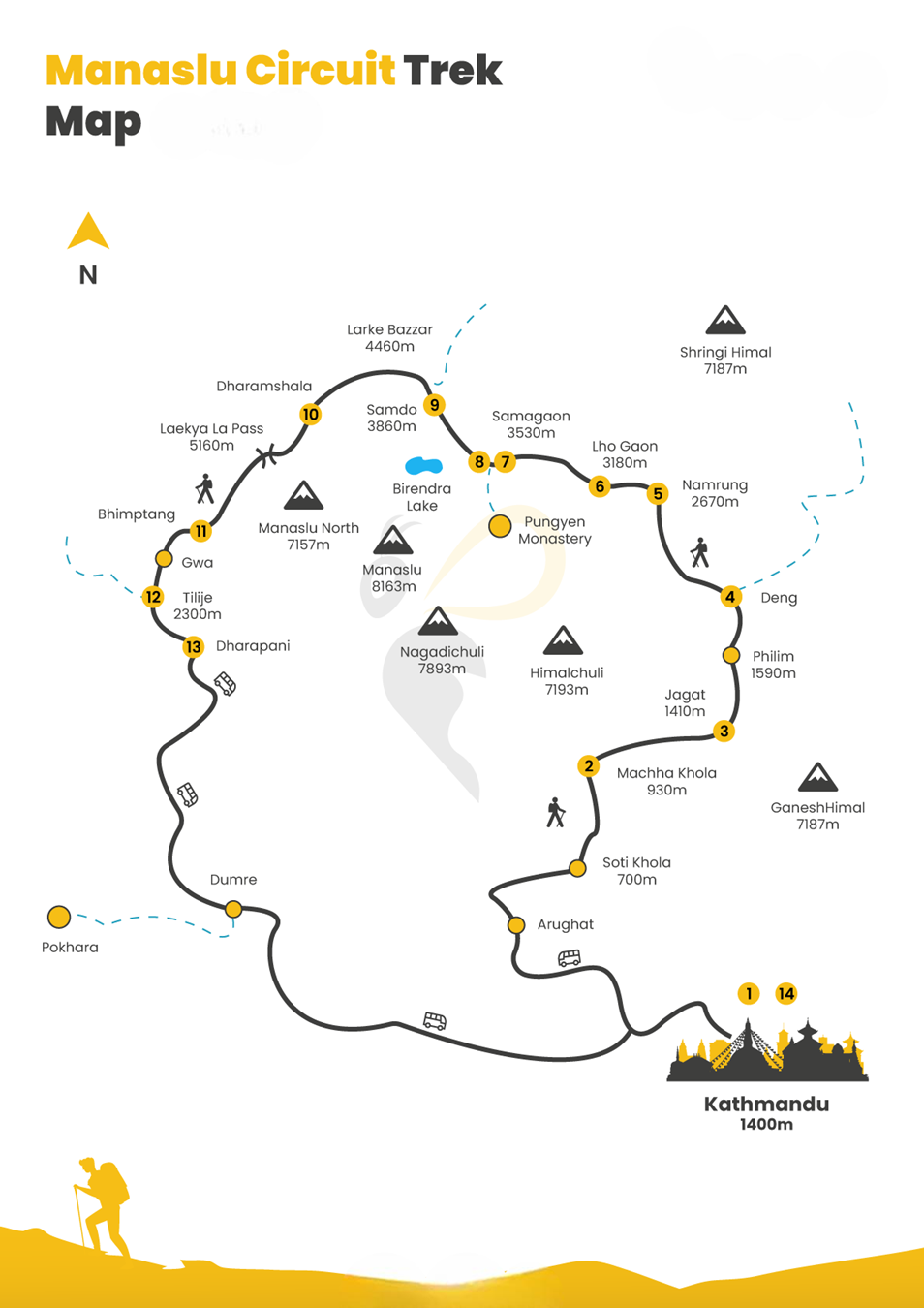
How much does the Manaslu Trek Cost?
The cost of trekking the Manaslu Circuit can vary based on several factors. On average, the cost can range from $900 to $2,500 per person for a 14 to 16-day trek. The cost mostly varies depending on the kind of service chosen.
What to Pack for the 14 Days Manaslu Circuit Trek?
Clothing
•Base layers: Warm, moisture-wicking thermal shirts and pants to regulate body temperature and wick away sweat.
•Fleece jackets and thermal pants: For insulation during cold sections.
•Durable trekking pants: Comfortable and protective against abrasions.
•Waterproof jacket: Essential for unpredictable weather, rain, and snow.
•Down jacket: Provides superior insulation at high altitudes.
•Moisture-wicking shirts: For various weather conditions.
•Gloves: Inner gloves for insulation and outer waterproof gloves for cold and snow protection.
•Sunhat: Protects from sun and cold.
•Trekking boots: Waterproof, sturdy, and well-fitting for rugged terrain.
•Socks: Multiple pairs of moisture-wicking, cushioned socks.
•Gaiters: Protect lower legs and boots from mud, snow, and debris.
•Trekking sandals: Useful for relaxing feet after a day of hiking.
•Crampons: For icy or technical parts of the trail.
Gear and Accessories
•Backpack: Comfortable with enough space for essentials but not too large.
•Duffle bag: For porter use to carry most belongings (usually provided by trekking agencies).
•Daypack: For personal items like ID, wallet, camera, snacks, and water.
•Sleeping bag: Suitable for cold temperatures (often provided by agencies).
•Trekking poles: Provide stability and reduce strain during hiking.
•Headlamp: Hands-free light source for early starts and evenings.
•Sunglasses: Dark lenses to protect eyes from strong UV rays and snow glare.
•Basic first aid kit: Including medications, bandages, and personal prescriptions.
•Toiletries: Travel-sized items like toilet paper, wet wipes, soap, deodorant, nail cutter, moisturizer, and lip balm.
•Sunscreen: To protect skin from harsh mountain sun.
•Insect repellent: Especially useful in summer.
•Water bottles: Reusable and refillable at safe water sources.
•Water purification: Tablets or filters to ensure drinking water safety.
•Snacks: High-energy items like nuts, energy bars, and dried fruits.
•Passport and permits: Kept in waterproof pouch and secure place.
•Local currency and backup cards: For purchases along the route.
•Quick-drying towel: Handy for sweat and hygiene.
•Camera or smartphone: For capturing memories.
•Power bank: Useful in areas with limited electricity.
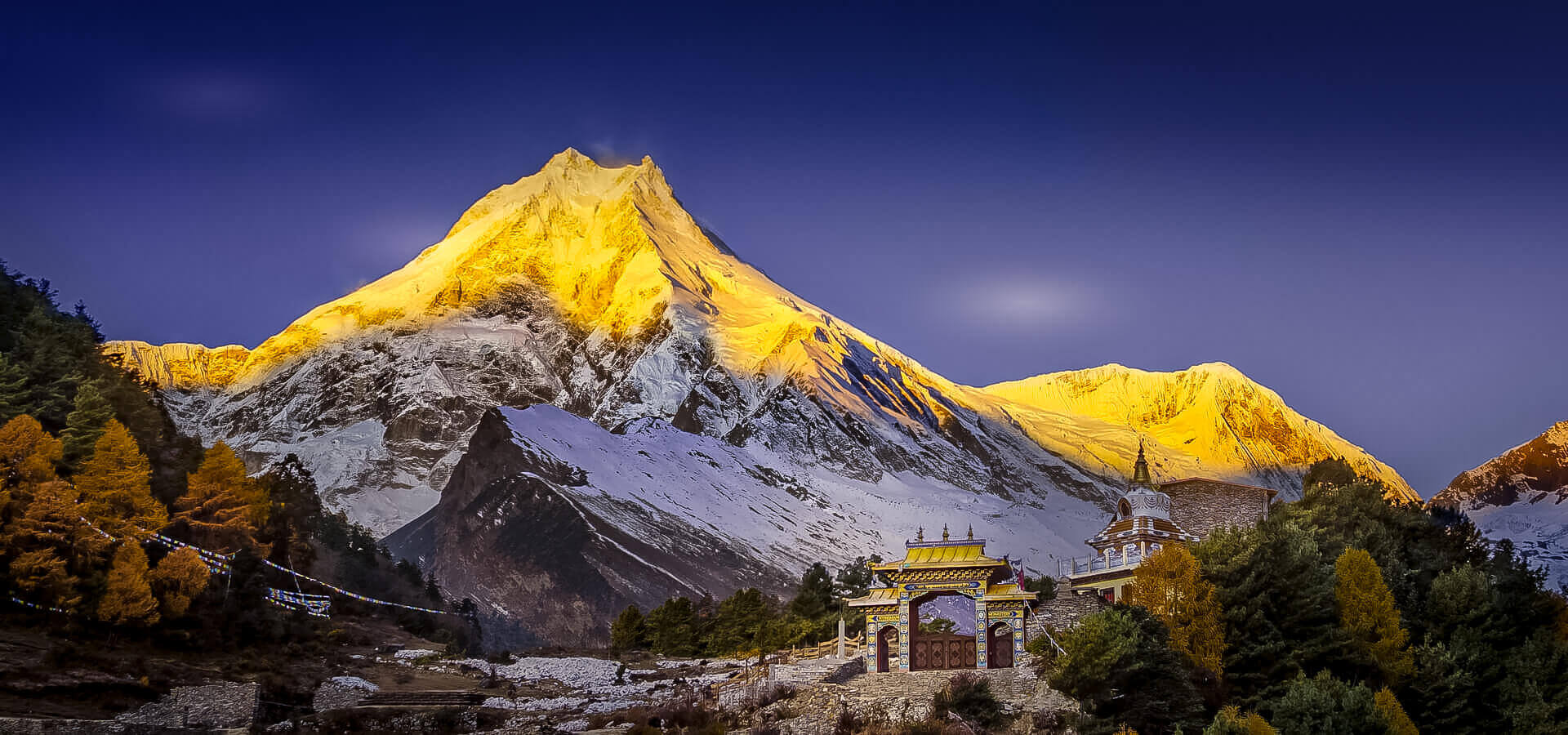
Transport for Manaslu Circuit Trek
The Manaslu Trekking begins with a thrilling journey covering 160 kilometers (approximately 99 miles) from the vibrant city of Kathmandu to the charming destination of Maccha Khola via Soti Khola. If you opt for a private Jeep, the ride will take you approximately 7 hours. Alternatively, if you choose the local bus option, you can expect a travel time of 8 to 9 hours. The first-day drive of your Manaslu trek promises an exhilarating off-road adventure.
Solo Trekking in The Manaslu Circuit
Solo Trekking in the Manaslu Region is strictly prohibited in Nepal. Since the Manaslu Circuit Trek route lies in a restricted area, you need to obtain special trekking permits with at least two people along with a guide. This rule was implemented by the government of Nepal to ensure the traveler's safety, given the challenging and remote nature of the trek.
Is Travel Insurance Mandatory for the Manaslu Circuit Trek
- While travel insurance is not mandatory for Manaslu Circuit Trekking, From steep terrains to unpredictable weather, being prepared for unforeseen circumstances is essential during the trek. Travel insurance acts as your safety net, offering financial protection and peace of mind throughout your journey.
Some of the benefits of having travel insurance are:
1.High-Altitude Trekking: You must make sure your policy explicitly includes coverage for high-altitude trekking.
2.Medical Coverage and Evacuation: Comprehensive medical coverage is non-negotiable so, you need to look for policies that offer quality medical benefits, including heli evacuation from restricted areas.
3. Trip Cancellation and Interruption: Especially in the Manaslu Trekking unforeseen events can disrupt your tour, That's why coverage for trip cancellation or interruption is required to safeguard your investment.
4. Baggage and Personal Belongings: Valuable items like cameras and gear are crucial for capturing Manaslu's beauty. Good travel insurance can protect your belongings from loss, theft, or damage.
5. Adventure Activities Inclusion: One thing you need to verify within your insurance is that trekking is covered, as some policies exclude certain high-risk activities. Manaslu, being a challenging trekking it requires specific coverage.
.jpg)
.jpg)
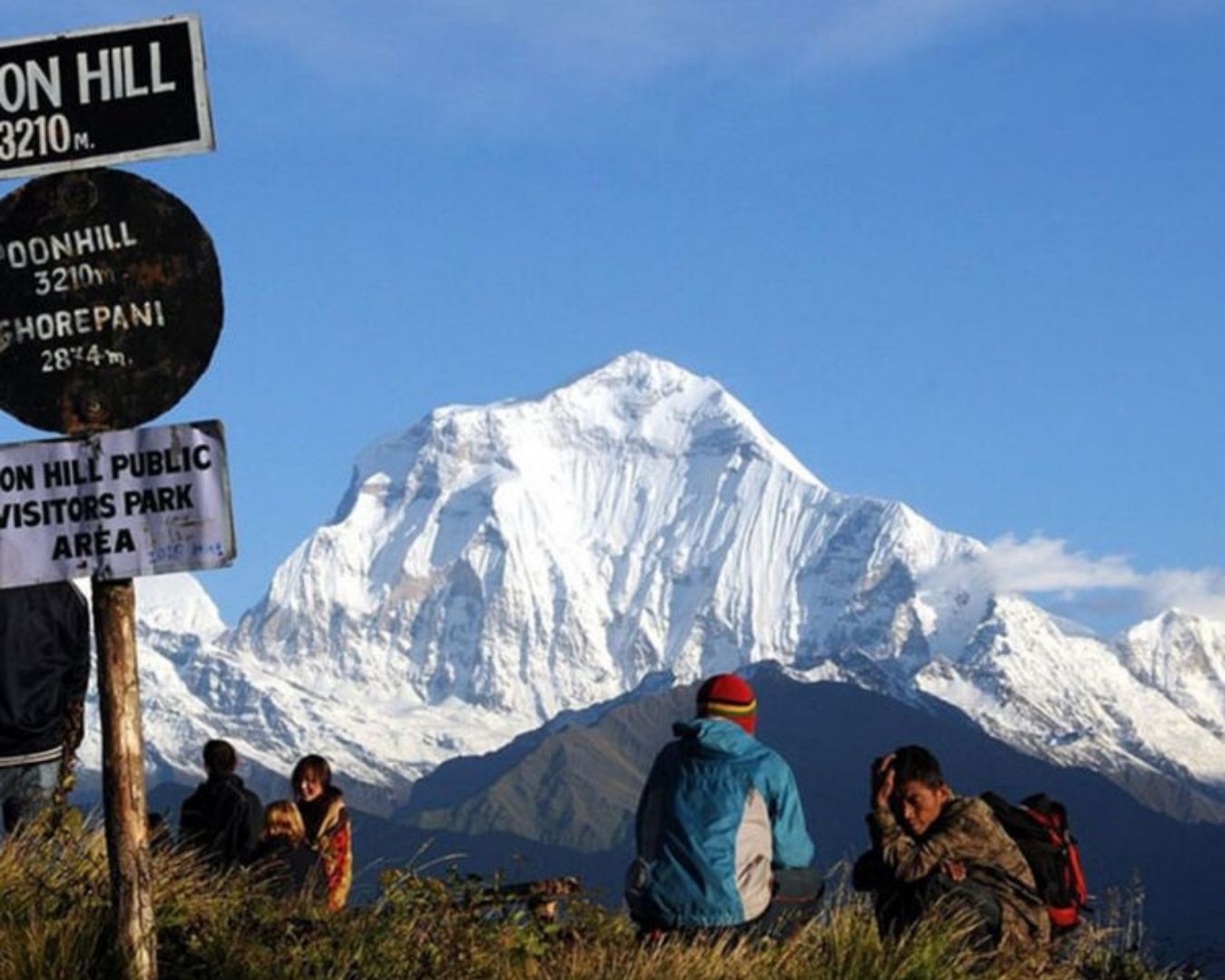
.jpg)
.jpg)
